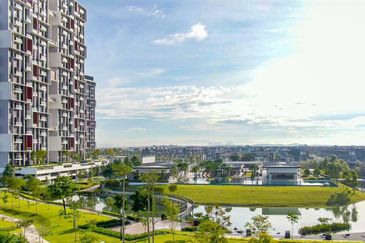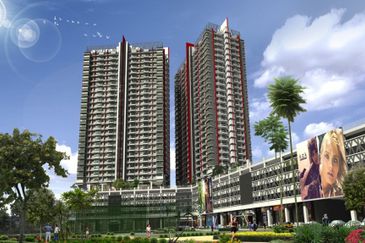
- Thursday's decision to maintain the OPR at 2.75% was largely expected as the country’s inflation remained contained, and because of the slowdown in the global economy.
KUALA LUMPUR (March 9): Following Bank Negara Malaysia's (BNM) decision on Thursday (March 9) to keep the overnight policy rate (OPR) unchanged for the second time this year, some economists say the central bank will continue to adopt a cautious approach on interest rates going forward.
This is in contrast to last year, when the key interest rate was raised by a total of 100 basis points (bps).
Thursday's decision to maintain the OPR at 2.75% was largely expected as the country’s inflation remained contained, and because of the slowdown in the global economy.
Capital Economics emerging Asia economist Shivaan Tandon expects BNM to keep the OPR at the current level for the rest of the year, as high interest rates may further weigh on the country's economic growth, after the gross domestic product (GDP) contracted 2.6% in the fourth quarter of 2022 compared with the third quarter.
“We expect economic activity to remain muted in the coming months as weak global demand and elevated interest rates weigh heavily on output.
“Household and corporate debt ratios in Malaysia are among the highest in the region, making the economy especially vulnerable to high interest rates. We think the GDP will grow by just 3% in 2023, which is well below the consensus forecast of 4%,” Shivaan said in a note.
In 2022, Malaysia’s economy improved at the quickest pace in over two decades with the GDP growing 8.7%.
Shivaan also said both headline and core inflation are expected to decline over the coming months which will be driven by falling commodity price inflation and tepid economic growth.
Headline inflation eased to 3.7% year-on-year in January, and it is well below its recent peak of 4.7% in August, he noted.
UOB Malaysia's senior economist Julia Goh and economist Loke Siew Ting said they expect BNM to raise the OPR by 25 bps to 3% at the next policy meeting in May, and then keep the rate unchanged for the rest of the year.
They said BNM's decision on Thursday to maintain the rate at 2.75% was in line with their projection.
“In our view, today’s monetary policy statement sent a slightly more positive tone than January’s statement despite highlighting similar downside risks to both global and domestic economic outlook.
"BNM observed some positive developments in the global economy with the reopening of China’s economy and better-than-expected growth outturns in major economies.
“At the same time, persistent interest rate hikes by global central banks continue to post headwinds to the global growth outlook amid ongoing geopolitical tensions, elevated inflationary pressures, and tighter financial market conditions,” said Goh and Loke.
MIDF Research, too, expects the central bank to restore the OPR to the pre-pandemic level of 3% in the first half of 2023 given the rising core inflation trend and stronger-than-expected domestic demand.
“We believe the possibility for further normalisation of monetary policy still remains given that domestic economic data [is] still showing upbeat momentum,” the research house said.
On Thursday's decision to keep the OPR unchanged, MIDF Research said the current focus of BNM’s monetary policy setting is to ensure a sustainable growth momentum of Malaysia’s economy.
BNM, it said, is taking a “wait-and-see” approach to assess the market performances after the OPR increased to 2.75% from a historical low of 1.75% last year.
Meanwhile, MIDF Research expects the central bank to normalise its statutory reserve requirement (SRR) to 3% this year, after the SRR was reduced to 2% since March 2020.
“However, the decision will be subjected to the stability of economic growth, the pace of price increases and further improvement in macroeconomic conditions, particularly a continued recovery in the labour market and growing domestic demand.
“From a medium-term perspective, the policy rate normalisation is needed to avert risks that could destabilise the future economic outlook such as persistently high inflation and a further rise in household indebtedness,” the research outfit said.
On the ringgit, MIDF Research foresees the local currency to appreciate against the US dollar at RM4.20 before ending the year at RM4.00.
"As the central bank hinted [at] higher-than-expected [US] Fed funds rate in 2023, we saw the appreciation trajectory of other currencies including ringgit reversed course since February 2023.
"Fundamentally, the ringgit is in a good position as the domestic economy stays on upbeat momentum and as a net exporter of crude petroleum, LNG (liquefied natural gas) and palm oil, Malaysia stands to benefit from the elevated global commodity prices. On top of that, the re-tabling of Budget 2023 provided a clearer fiscal direction of the country, especially under the new coalition government," MIDF Research said.
In a statement on Thursday, BNM said the current OPR level remains accommodative and supportive of economic growth, adding that the downside risks to Malaysia’s economy continue to stem from global developments, including weaker-than-expected growth outturns or much together and more volatile global financial conditions.
Hence, the central bank expects the local economy to moderate this year amid a slower global economy, and the growth will remain driven by domestic demand, as household spending will be underpinned by sustained improvements in employment and income prospects.
“Nevertheless, the global economy continues to be weighed down by elevated cost pressures and higher interest rates. Headline inflation moderated slightly from high levels in recent months, but core inflation remained above historical averages.
“Some central banks are expected to continue raising interest rates to manage inflationary pressures. This will continue to pose headwinds to the global growth outlook,” said BNM.
TOP PICKS BY EDGEPROP

Bandar Damai Perdana
Kuala Lumpur, Kuala Lumpur

Chimes @ Bandar Rimbayu
Telok Panglima Garang, Selangor

Broadleaf Residences, Hometree
Kota Kemuning, Selangor

Cheria Residences, Tropicana Aman
Telok Panglima Garang, Selangor

The Parque Residence @ Eco Santuary
Telok Panglima Garang, Selangor

The Parque Residence @ Eco Santuary
Telok Panglima Garang, Selangor



















